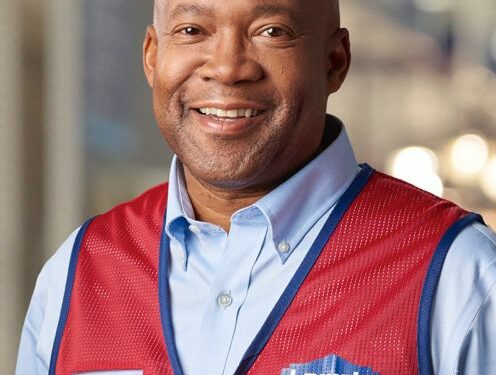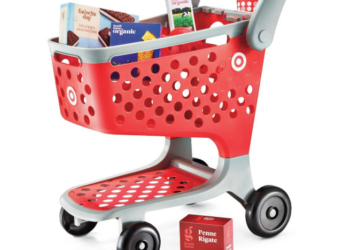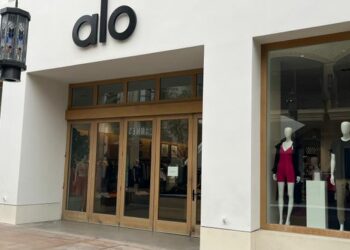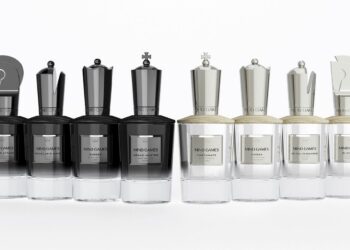Spring spurs homeowners to tackle fresh projects with new tools and materials. For Lowe’s to fulfill this incoming demand amid global supply chain challenges, it had to take on a renovation project of its own.
“Just like any other company out there, we’ve had to make the right pivots to survive in this environment,” Don Frieson, Lowe’s executive vice president of supply chain, said in an interview with sister publication Supply Chain Dive.
A combination of COVID-19-related impacts like more remote work and traditional benefits like an aging housing stock have helped boost home improvement demand since the pandemic began. This has benefited Lowe’s sales, but it has also placed increased pressure on the retailer’s supply chain in an era of choppier inventory flow, reduced product availability and pricier logistics.
To keep Lowe’s supply chain humming during upstream snags and increased e-commerce demand, the company expanded its logistics facility footprint and launched its transition to a more efficient home delivery approach, among other measures. Cost of sales increased from fiscal year 2020 to 2021, but so did the company’s gross margin.
Donald Frieson, Lowe’s executive vice president of supply chain, joined the company in 2018.
“I think 2020 was fast paced, we were just trying to do anything we could to make it work,” said Frieson, who joined Lowe’s in 2018 after serving as COO at Walmart-owned Sam’s Club. “In 2021, we were able to normalize that increased activity and support a new level of sales.”
A ‘prudent’ solution for product availability
Lowe’s supply chain includes a mix of regional and flatbed distribution centers to help it move a bevy of imports to stores and customers. But since the pandemic began, the company has also been adding facilities with specialized functions beyond what these centers can do.
By the numbers
15
The number of Lowe’s U.S. regional distribution centers, which move products from vendors to stores or directly to customers, per its most recent annual financial report.
15
The number of Lowe’s U.S. flatbed distribution centers, which distribute products that require special handling such as lumber, siding and ladders.
115
The number of stores each regional distribution center and flatbed distribution center serves on average.
65%
The percentage of Lowe’s merchandise purchased, in dollars, that shipped through its distribution network in fiscal year 2021. The remainder shipped directly from vendors.
In fiscal year 2021, the company added six cross-dock delivery terminals to fulfill last mile deliveries and four bulk distribution centers to handle large products like appliances. Lowe’s is also using what’s known as coastal holding facilities to carry imported products upstream, allowing the retailer to secure the products from vendors earlier and deliver them to distribution centers and stores when needed.
“When it comes in that early, you have to have somewhere to go with it, because to immediately push it downstream, that’ll push your stores out of season,” Frieson said. “So [coastal holding facilities] proved to be really, really important to us.”
For optimal flow from a coastal holding facility, Lowe’s factors in the inventory levels necessary to support its sales forecasts in addition to the average lead times from a facility to a regional distribution center and then to a store, Frieson said.
Lowe’s has five coastal holding facilities in its arsenal today, including locations in Rincon, Georgia, and Pittston, Pennsylvania, that opened in Q4, according to a spokesperson. The company has two more sites under development that will come online in late 2023. A coastal holding facility’s square footage ranges from around 420,000 square feet to 750,000 square feet, Frieson said.
Lowe’s holds imports near major port markets
Locations of coastal holding facilities
For a business the size of Lowe’s — it’s the fourth-largest importer in retail, per Frieson — the investment is worth it. Chairman and CEO Marvin Ellison said on a February earnings call that taking possession of shipments early and holding them at a facility will elevate inventory levels, but said that it’s “the prudent thing to do” to secure products.
From store to market delivery
Further down the supply chain, Lowe’s is also ushering in a new system to reduce the steps required to deliver a product to a customer.
“Our current legacy delivery model is tremendously inefficient with each store functioning as its own distribution node for big and bulky products,” Ellison said on a December conference call discussing Lowe’s 2022 outlook.
The store delivery model has Lowe’s holding appliances in its stock rooms and in storage containers behind stores. The company uses store-based delivery trucks and associates to then deliver those items to customers. Customers can only purchase items available in-store for delivery, according to Ellison.
The legacy model also leads to last mile inefficiencies. Frieson said two customers that live on the same street buying from different stores may be serviced by two different delivery trucks, even if their orders arrive at the same time.
“If you were able to aggregate the deliveries from several stores, then you would be able to optimally wrap those so that one truck takes advantage of ZIP code delivery versus criss-crossing across the city,” Frieson said. “That’s exactly what market delivery is doing for us.”
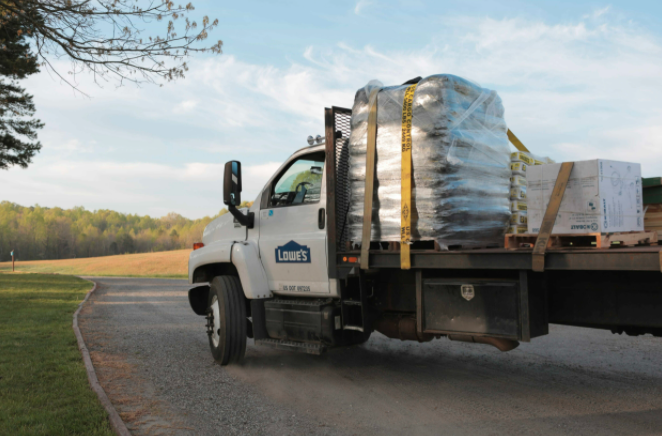
Courtesy of Lowe’s
The inefficiency of that system drove Lowe’s to launch a new delivery model where big and bulky products skip stores entirely when shipping to a customer.
If someone buys an appliance at 4 p.m. in stock at a bulk distribution center, then Lowe’s can deliver the product from that center to a cross-dock facility that night. The facility then prepares the product for delivery so it can be made the following day. The result is two fewer touchpoints in the process and a one-day delivery promise for the customer, according to Frieson.
Lowe’s has already converted its Florida and Ohio Valley markets to the new model, Ellison said in his outlook.
Since the model has deployed, Lowe’s has seen “higher operating margins and appliance sales, improved inventory turns, reduced damages and better customer satisfaction with higher on-time delivery rates,” according to Ellison. The company plans to convert the entire U.S. market to the new model over the next 18-plus months.
There will be pressure on Lowe’s in the near term as it ramps up the new model. During a market transition, “you are kind of almost running two supply chains a little bit until you get fully up to 70%, 80% utilized in those spaces, then you start to see it flip and be positive to us,” CFO David Denton said at the UBS Global Consumer and Retail Conference in March.
The transition will free up space at Lowe’s stores, allowing them to have more capacity for other supply chain activities such as same-day and next-day fulfillment to job sites. That will benefit Lowe’s supply chain further, as expanded last mile capabilities and reduced store complexity have been among the company’s priorities even before the pandemic, Frieson said.
“Our team just built on top of that, as customer expectations get higher for faster, cheaper fulfillment options,” Frieson said. “It’s working its way through our supply chain network and growing the efficiency that we see in moving goods, so it’s been good for us.”


